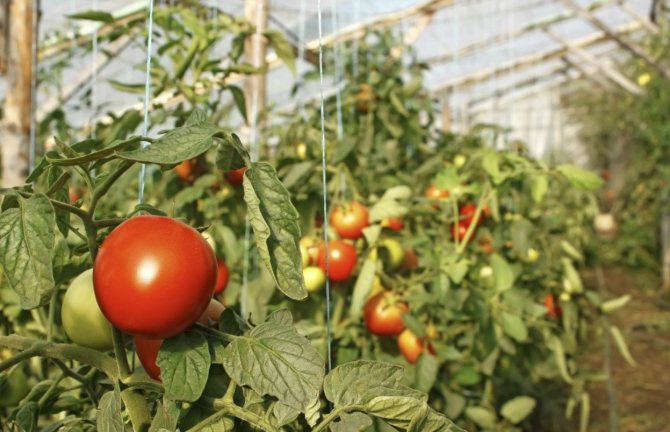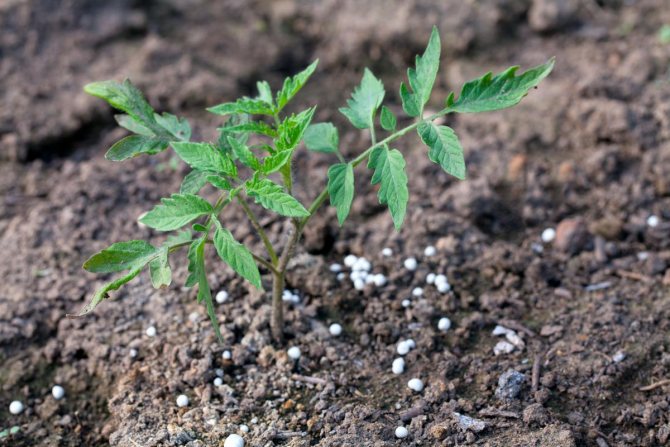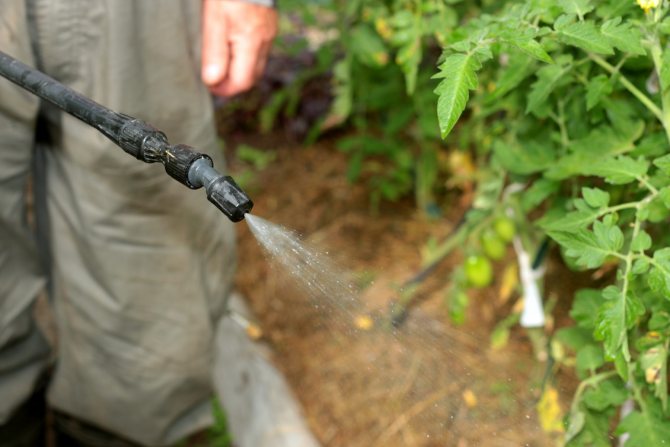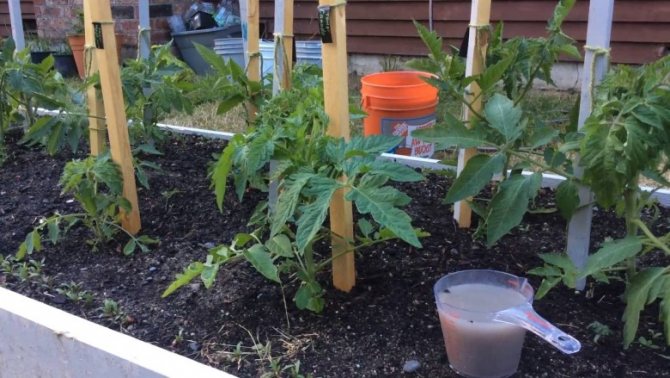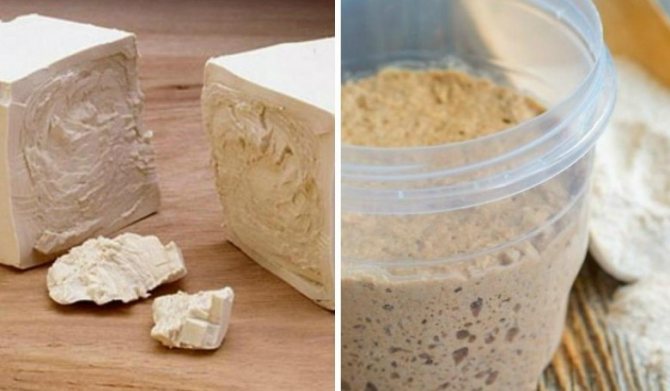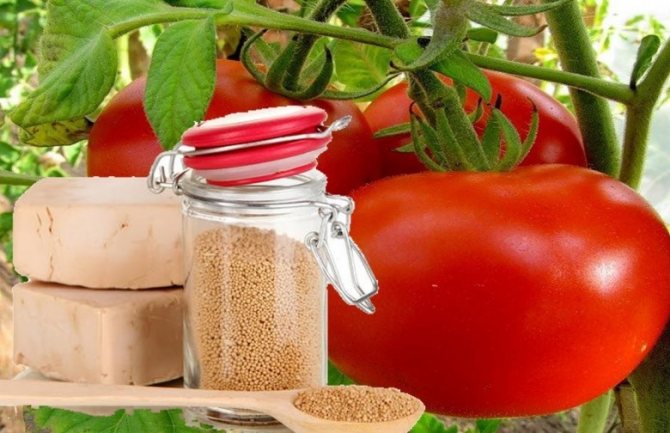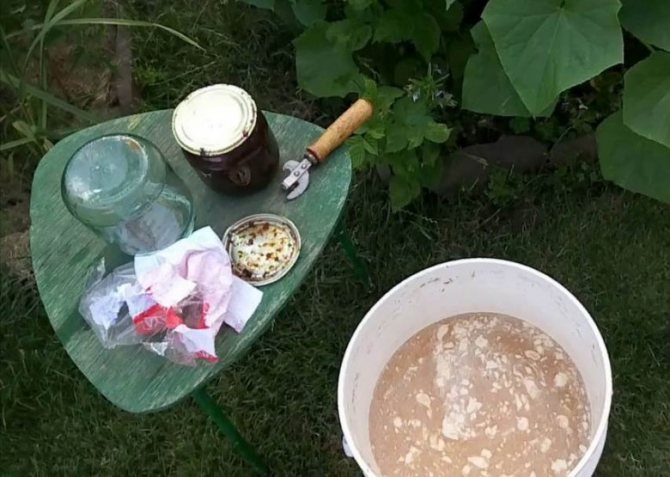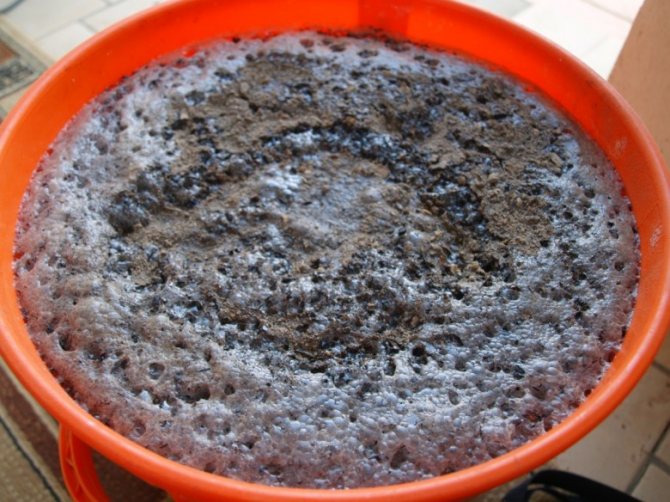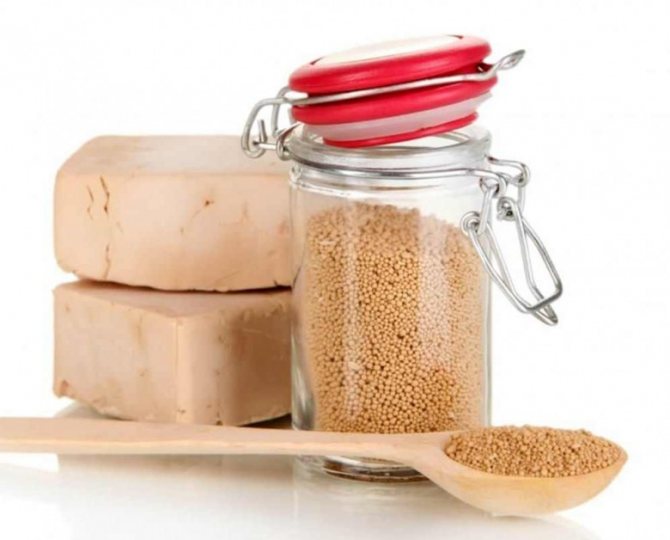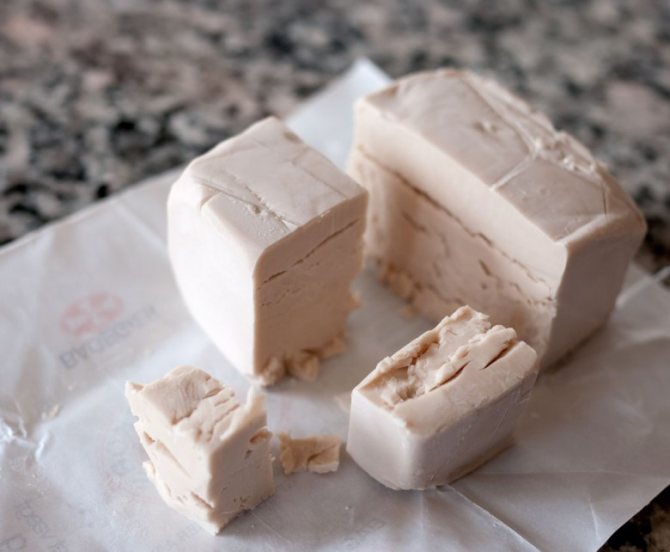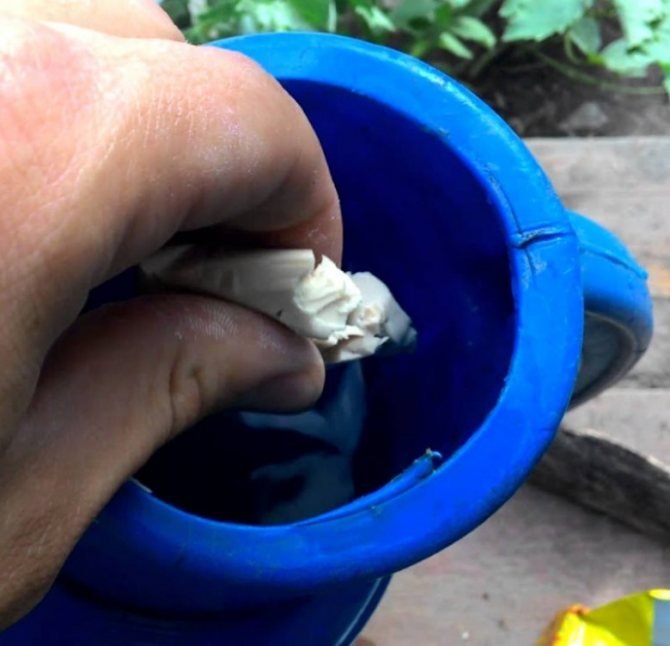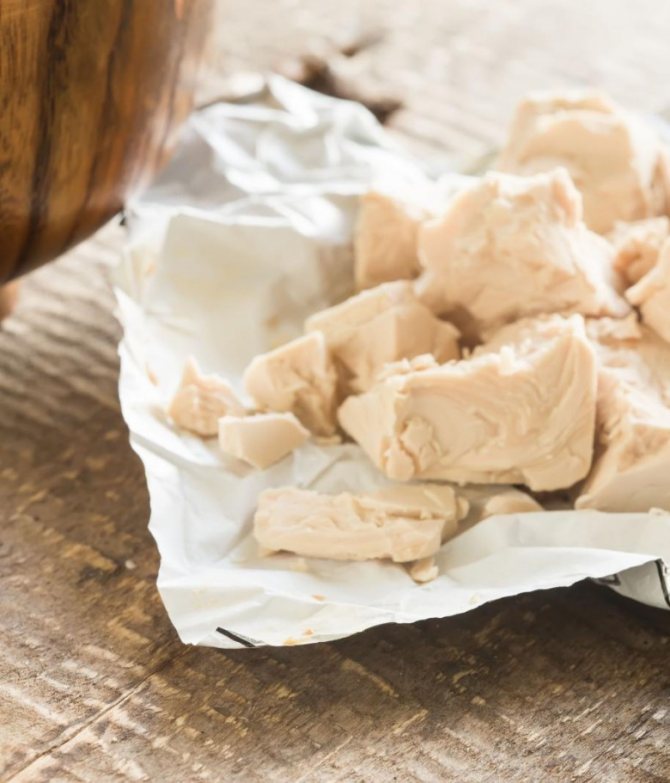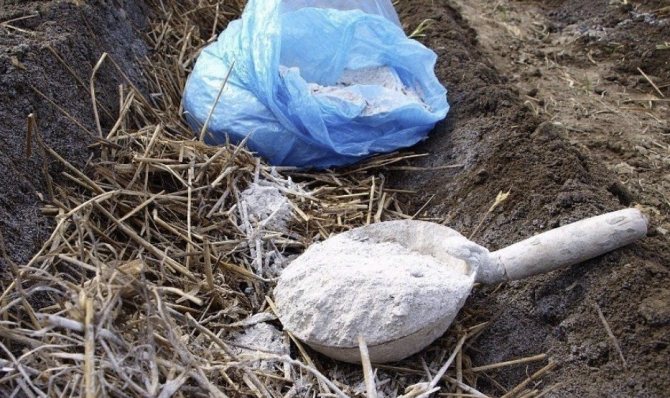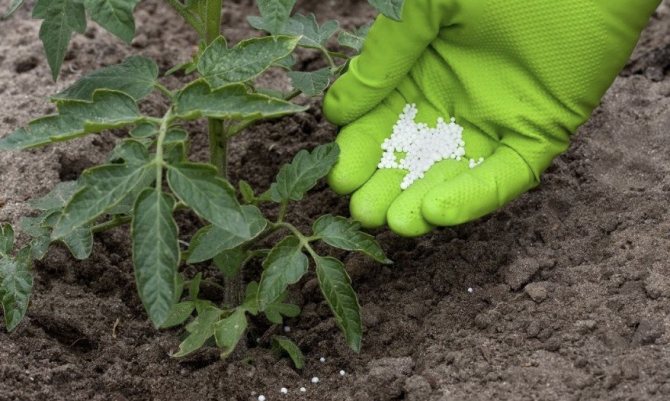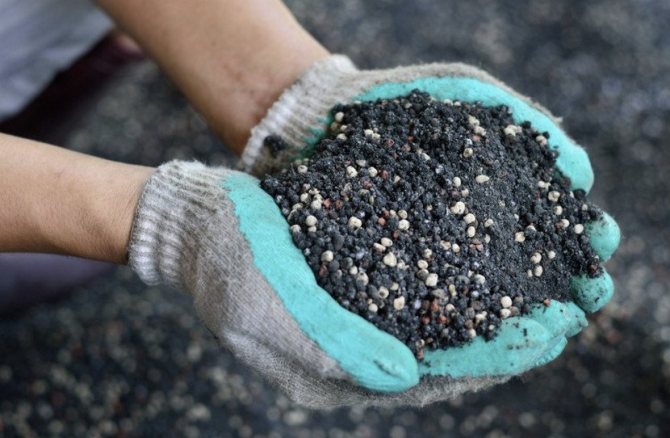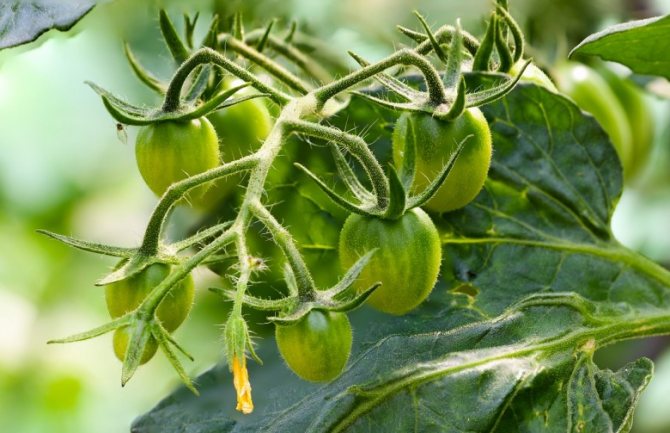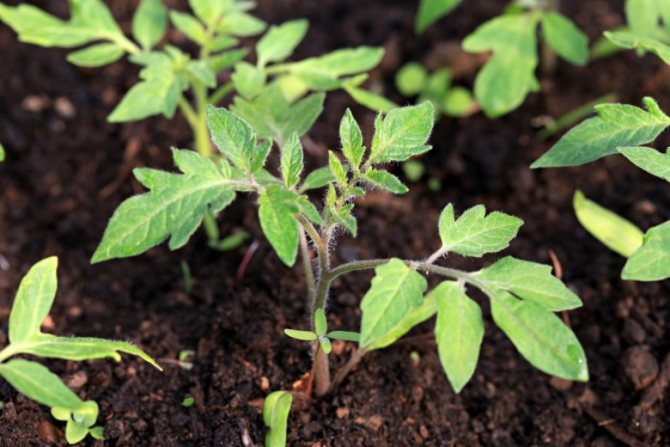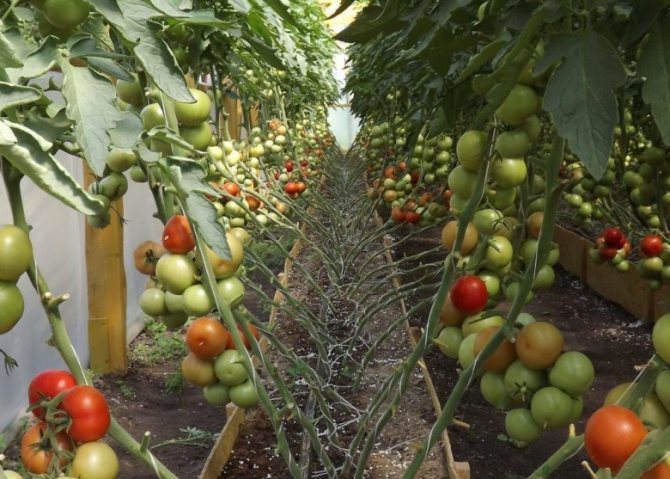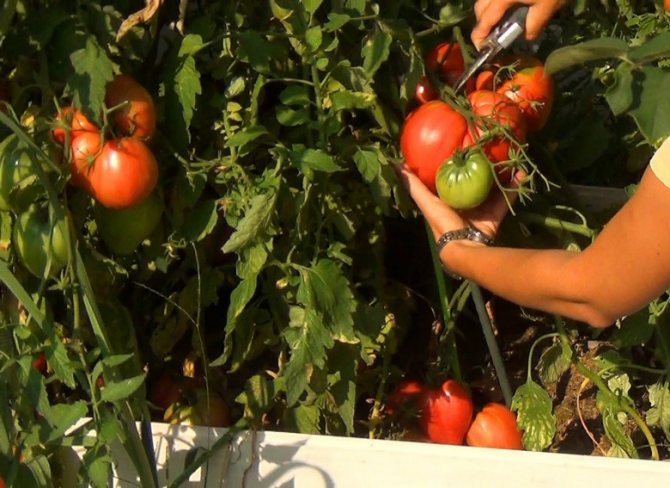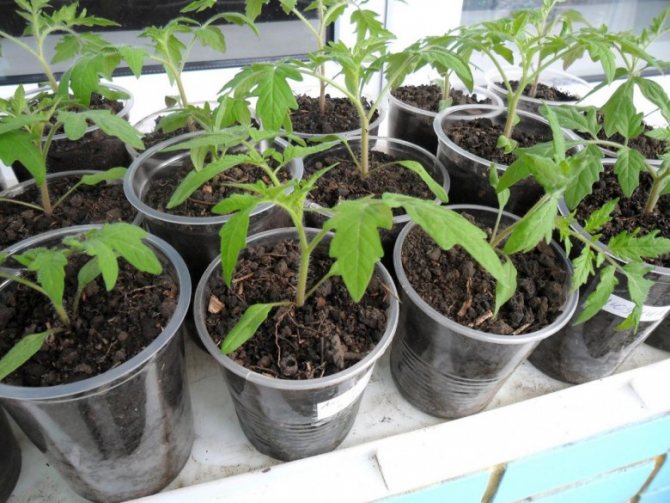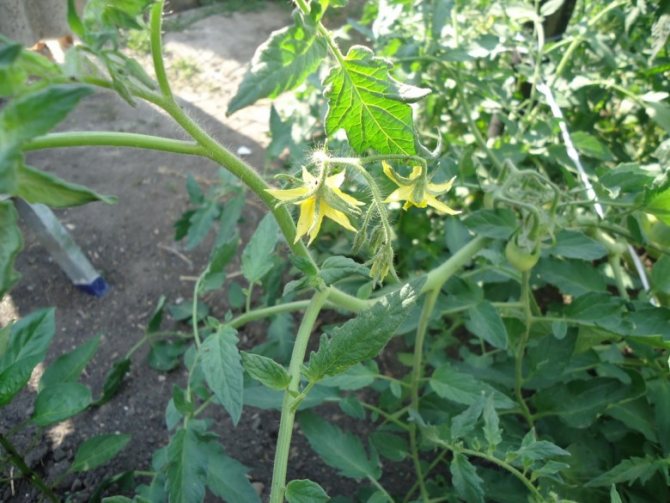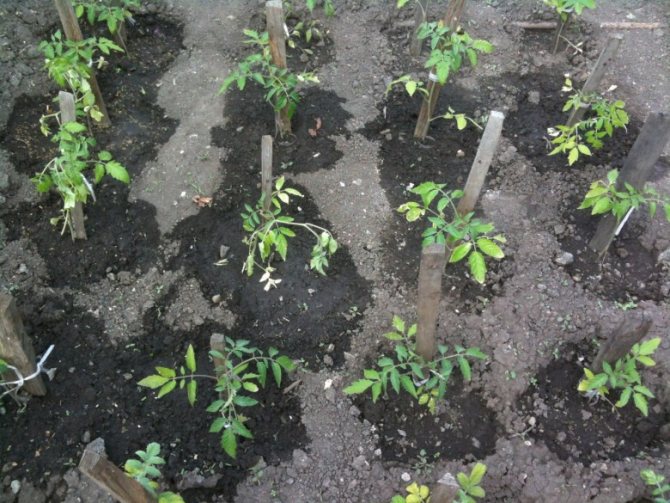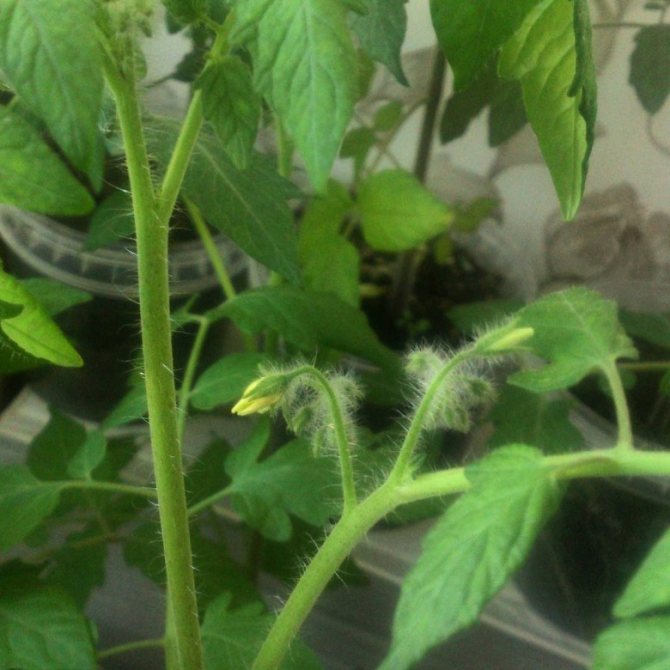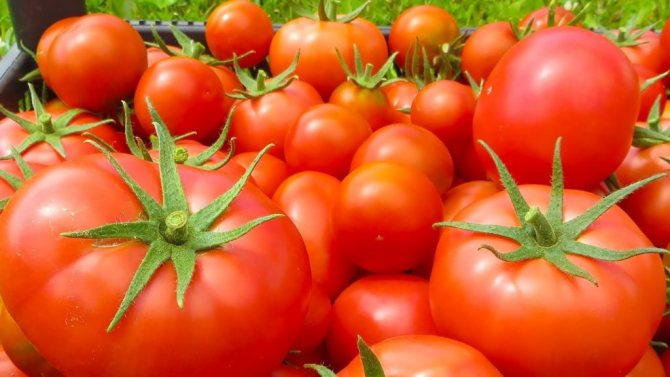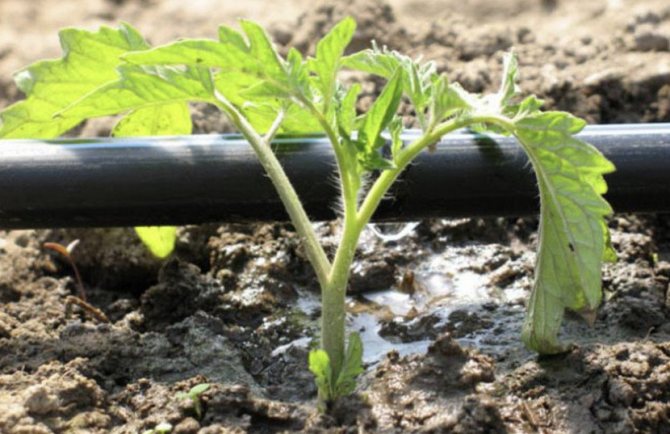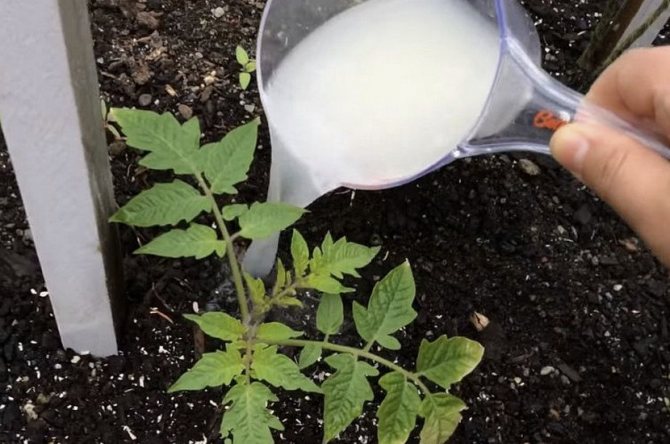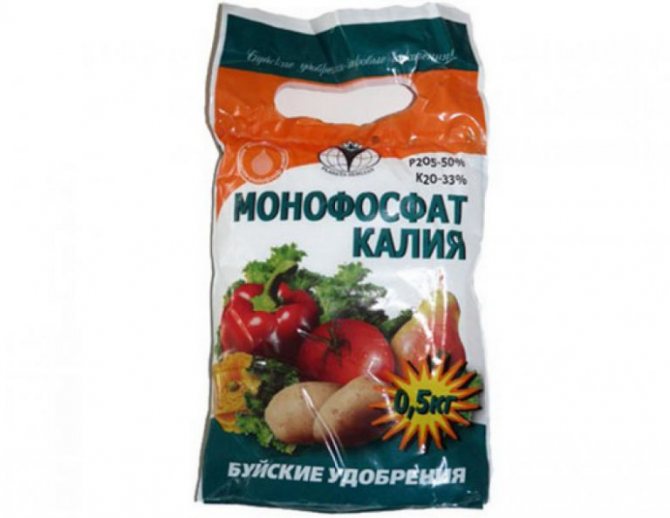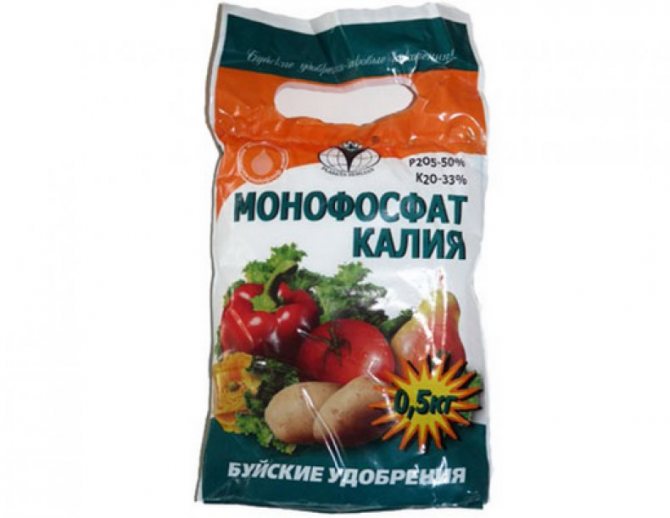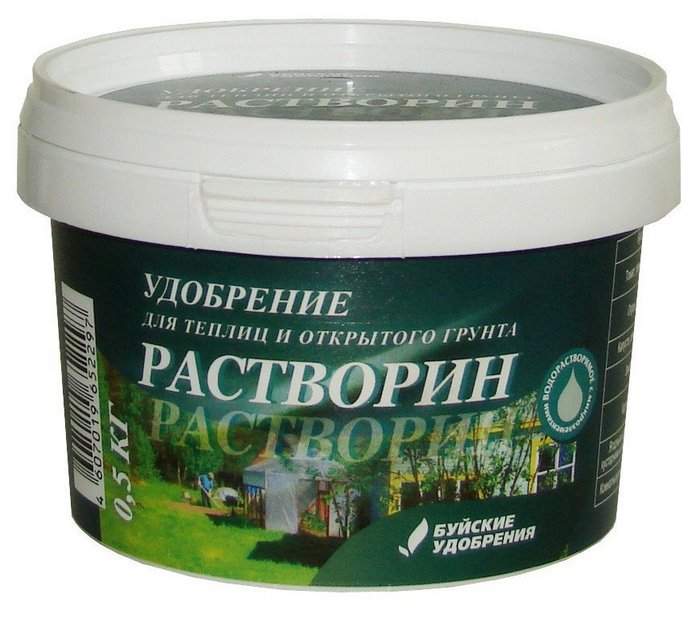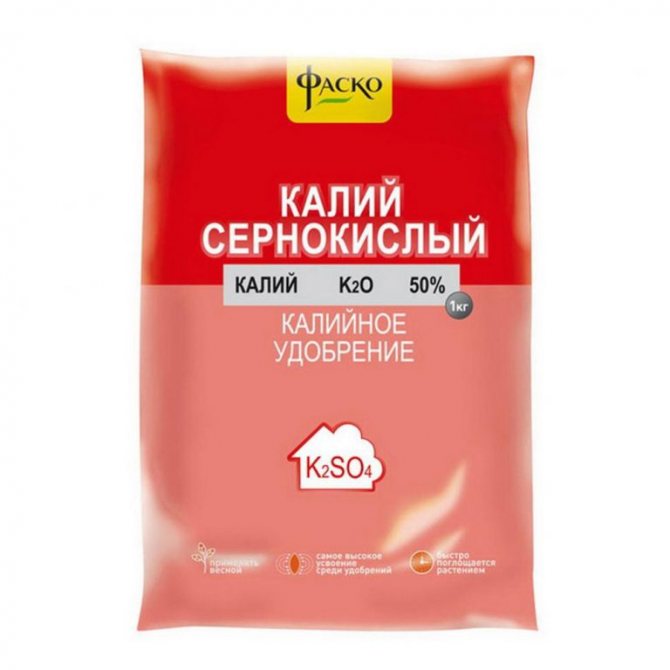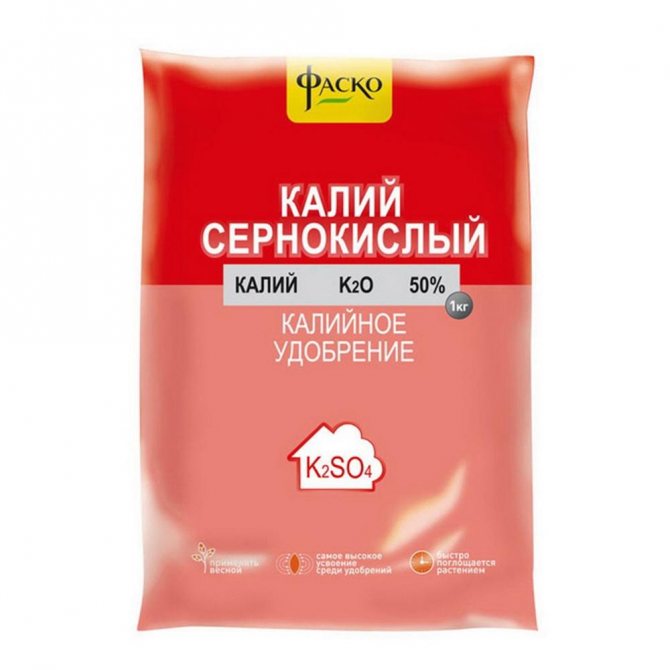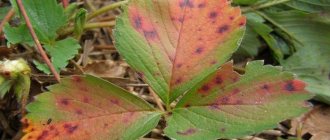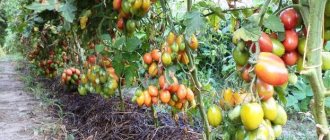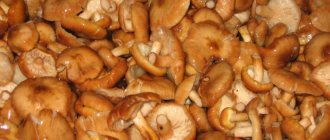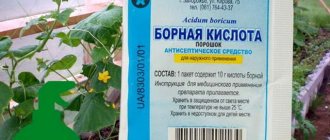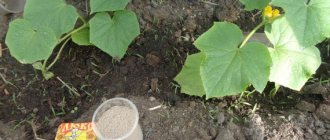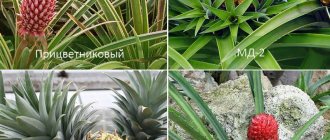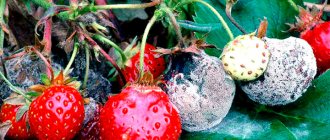What fertilizers and when to use
Fertilizers for tomatoes in open ground, greenhouses, greenhouses are used the same. It's just that in a confined space, not only care should be more thorough, but the feeding schedule must be strictly adhered to.
No wonder the concept of "greenhouse conditions" has become a household name. Tomatoes are protected from weather disasters, but they do not receive enough nutrients supplied with precipitation, air and water circulation in the open field.
How many times to feed
You will have to feed healthy, normally developing tomato bushes at least 4-5 times:
- Starting fertilizers are applied to the hole.
- 10-14 days after planting in the ground, a mineral complex with a predominance of nitrogen is given to build up green mass.
- When the second flower cluster is laid, the tomatoes are transferred to the generative stage of development. This requires phosphorus and potassium.
- At the stage of active formation of ovaries, tomatoes are fertilized with a complete mineral complex with a minimum nitrogen content. It is unacceptable to completely exclude the element from the feeding scheme.
- In July and August, during the harvest, the food should not be deprived of the culture. Tomatoes need to be fertilized with potassium, the need for which increases sharply, and calcium so that the fruits do not crack.
We'll have to do double root dressing. Calcium vital for tomatoes, without which other nutrients simply will not be absorbed, cannot be added at the same time as phosphorus and potassium.
What fertilizers do tomatoes need after planting in the ground
In general, tomatoes are considered to be a medium-demanding crop with agricultural feed 58, especially those that love P. The ratio of phosphorus to other elements (N: P: K-complex) is 36:19:45.
Nitrogen
In the first half of the growing season, nitrogen is the main nutrient for tomatoes. It is also needed afterwards, but in small doses. During flowering and fruit setting, nitrogen allows the leaves to grow, through which all plastic and nutrients pass before they get into the tomatoes.
If the green mass is poorly developed, the fruits simply will not get useful elements. But tomatoes should not be fattened either, otherwise all fertilizers will "work" exclusively for the growth of leaves and stepchildren.
After planting in a greenhouse or soil, before the formation of a second flower cluster, nitrogen should constitute a significant part of the dressing. During the mass opening of the buds, during the ripening period, with the normal development of greens, the tomatoes should be supplied in ammonium form, when spraying the aboveground part. So it is quickly absorbed and excreted without leading to the accumulation of nitrates or fattening.
Ammonium nitrogen contributes to the formation of glutamic acid in tomatoes, which makes the fruit tasty. It is present as a food additive in many products, and it was first isolated from tomatoes.
In addition to the above, if in July, tomatoes are completely deprived of nitrogen in a polycarbonate greenhouse or open ground, early vershkovka is possible. This is especially true for medium-sized determinant varieties or hybrids. In greenhouses, instead of 10 full-fledged brushes, you can get 4-5, which will significantly reduce the yield.
Potassium
The element is needed at all stages of tomato development, but it is especially actively absorbed during the formation and filling of ovaries.Potash feeding of tomatoes during flowering and fruiting in a greenhouse or soil allows you to get a good harvest, increases the sugar content of tomatoes.
Phosphorus
Inexperienced gardeners may be surprised that tomatoes are classified as phosphorus lovers. In quantitative terms, they consume the element much less than nitrogen or calcium. But, compared to other crops, tomatoes really need a lot of phosphorus.
The element is especially needed at the initial stages, during the formation and development of the root, in the future it:
- transfers the tomato to the generative phase;
- gives energy;
- participates in photosynthesis;
- accelerates flowering;
- improves the taste of fruits.
If the soil has been filled with superphosphate since autumn, additional dressings may not be required with the normal development of tomatoes. But when it was introduced only in the spring, P will not have time to go into a state easily digestible for plants. We'll have to give top dressing in the form of an extract or together with potassium. In an easily accessible form, the element is found in fertilizers:
- potassium monophosphate;
- Pekacid.
Calcium
It is impossible to receive commercial products if there is a shortage of this item. Top rot is nothing more than a calcium deficiency. It is he who promotes the assimilation of other fertilizers, but Ca should be given separately from phosphorus, magnesium and potassium.
To avoid an imbalance of nutrients, and as a result, the cessation of their assimilation, even with a sufficient content in the soil, the Ca: K ratio should be 0.7: 1. Fertilizers should be given at different times: first calcium, and after 1-3 days - potassium.
Trace elements
Top dressing of tomatoes in open ground or in a greenhouse must necessarily include trace elements. Usually there are enough of those contained in any specialized fertilizer for tomatoes. But some may need to be given in addition. Tomatoes especially often suffer from a shortage of:
- Bora. This element is the key to a rich harvest. It does not allow the ovaries to crumble. The first signs of boron deficiency: the leaves become light, brittle, curl at the top. When the joints of the flowers with the brush turn yellow, nothing can be done - the buds will fall off.
- Copper. Lack of an element leads to late blight. It is better to give it in the early stages of development, before the first signs of the disease appear and the fruit begins to pour. Copper preparations are not fertilizers, but fungicides.
Other trace elements are also needed, but usually tomatoes receive them as part of a chelate complex with foliar dressing or other fertilizers. For example, sulfur is present in sufficient quantities in superphosphate.
Top dressing tricks to achieve specific goals
To make the tomatoes plump, it is recommended to feed them nitrogen or nitrogen-calcium fertilizers two weeks after planting seedlings in open ground or a greenhouse, or when 2-3 true leaves appear after sowing to a permanent place. For example, you can fertilize with the following preparations: urea (carbamide), ammonium nitrate, calcium nitrate, herbal infusion, chicken manure infusion, mullein.
To make the plants more strong, sturdy, for better growth and development, it is recommended to feed the tomatoes yeast... It is better to do this one or two weeks after planting in the soil. Ordinary baker's yeast will do. To prepare the infusion, you need to follow a simple recipe: dilute 100 grams of dry product in 10 liters of warm water, add 2 tablespoons of sugar, mix well, leave for 2 weeks in a warm place, stirring regularly. Then, before use, the yeast fertilizer should be diluted 1 to 5.
To have more ovaries, it is recommended to fertilize tomatoes during flowering boron (for example, boric acid in powder form (5 g per bucket of water), Boroplus, Borofosk). It is best to do foliar feeding (i.e.spraying), but you can also water it at the root.
To prevent top rot, it is recommended to fertilize the plants calcium preparations (you can make both root and foliar feeding). For example, you can use calcium nitrate, and it is better to feed the tomatoes before flowering or after fruit setting.
So that the tomato harvest ripens faster, it is recommended to make potash fertilizers... For example, infusion of wood ash, potassium nitrate, potassium magnesium, potassium monophosphate.
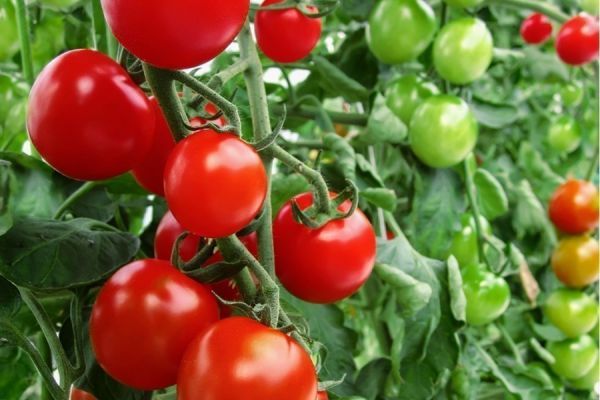
To properly care for any vegetable crop in the country or a plot of a private house, you need to make a lot of effort. But it is also important to know the nuances, features, and necessary procedures. If everything is done correctly throughout the season (including adding nutrients), then you can get a rich, tasty and good harvest!
Fertilization features
Trace elements are better absorbed with foliar dressing. They can be given no more than once every 14 days. This is the best way to correct nutritional imbalances with tomato ambulance. Fertilizers work:
- immediately with foliar treatments;
- after 5-7 days when watering at the root.
When applying dressings, you need to consider:
- what phase the tomato is in - vegetative or generative;
- the condition of the bush;
- what fertilizers were used for planting;
- what was brought in for digging in the previous season or in the spring;
- acidity, soil composition.
Feeding tomatoes with ash
To feed the tomatoes, you can use wood, straw, or peat ash. It contains a large amount of: calcium, phosphorus, magnesium, a flowering plant cannot do without them.
Mode of application:
- Once every 7 days, a tablespoon of ash is poured under a tomato bush.
- With a solution of ash, plants are watered 2 times a month (100 grams of ash is diluted in 10 liters of water). One bush should receive half a liter of solution.
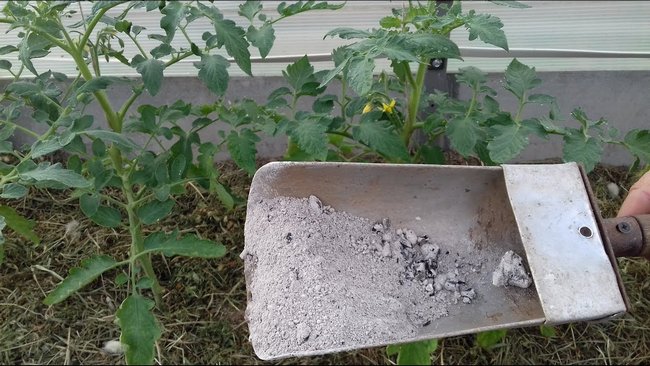

Fertilization when planting tomatoes
Immediately before moving the tomatoes into the ground, it is recommended to make top dressing, which will make it easier for the seedlings to transfer the transplant, and quickly grow:
- Dissolve 2 tbsp in a glass of warm water. l. sugar and 10 g of dry yeast.
- Insist 2 hours.
- Dilute in 5 liters of water.
- Drizzle over the tomatoes.
During planting, 4 tablespoons of a mixture consisting of parts of the same volume are added to each well:
- fertilizer containing NPK complex;
- dolomite flour or lime;
- tobacco dust or shag;
- dry ground mustard.
The last two components do not contain fertilizers, but they help protect tomatoes from diseases and some pests. The collection is well mixed with the soil, covered with a thin layer of earth, and only then the tomatoes are planted. So the root will not get burned from contact with the fertilizer, but will reach for nutrients.
What elements are needed for tomatoes
The appearance of the first flower cluster is a signal that it is time to feed the tomatoes. The culture is able to extract the maximum amount of necessary elements from the soil. Tomatoes are most used for the development of 3 essential minerals:
- nitrogen;
- potassium;
- phosphorus.
In the flowering phase, the feeding regime changes, because the bushes have basically acquired their varietal characteristics in height and size. Now the culture requires less nitrogen to set the tops, and for good flowering and creating ovaries, more potassium and phosphorus are needed.
Potash fertilizers are used for high-quality fruit formation. Phosphorus also participates in the fruiting process and at the same time strengthens the root system of the culture, because the plant must withstand a considerable harvest. A large amount of nitrogen is needed for tomato bushes during flowering only in one case - if the plant has taken root poorly, the stems are thin and low, the leaves are small.These signs may be due to poor quality seedlings, insufficient watering or lighting, lack of nutrients in the soil.
For the harmonious growth of the bush and the ripening of tomatoes, top dressing is important, in which there are microelements in a balanced ratio:
- calcium;
- manganese;
- magnesium;
- iron;
- zinc;
- boron;
- sulfur and others.
Top dressing of tomatoes during flowering:
- increases the amount of harvest;
- promotes the development of the root system for sufficient plant nutrition;
- improves the shape and taste of the fruit.
Top dressing of tomatoes in the greenhouse during flowering is mandatory, since plants need additional nutrition in a closed room. Without enough formative minerals:
- bushes create few fruit clusters;
- there are many barren flowers in the inflorescence;
- ripening time is stretched;
- fruits are small, irregular, sour and tasteless;
- the core of tomatoes retains a green-white tint, does not turn red;
- leaves turn yellow, turn brown and crumble;
- ripe tomatoes have a lot of unripe seeds, of which there will be rare and poor shoots when sowing.
Important! For tomatoes, top dressing is carried out first of seedling growth, during flowering and the formation of ovaries, stopping the procedure 30-40 days before the end of the growing season.
How to feed tomatoes after planting in the ground or greenhouse
The first feeding of tomatoes can be done no earlier than 10 days after planting in the ground. Experienced gardeners recommend first giving phosphorus-potassium, spending 0.5 liters under a bush, and after a week - containing nitrogen.
Although at this stage the tomatoes should grow green mass, immediately after moving into the ground, they need to strengthen the root. Otherwise, he simply cannot feed the plant. By supporting the underground part, you can take care of the development of leaves and stems.
Tomatoes are given any nitrogen fertilization that is highly soluble in water, diluted according to the instructions. Proponents of organic farming can replace it with homemade fertilizer, pouring 500 ml at the root:
- mullein infusion and water 1:10;
- green fertilizer solution 1: 5.
Manure can only be given completely fermented. Fresh culture, it is categorically contraindicated.
Simultaneously with the first top dressing, tomatoes are sprayed with a solution of succinic acid. This is a universal source of energy that promotes the survival of bushes, giving them strength for further development. Dissolve 2 g of the preparation in 10 l of water.
Feeding tomatoes with iodine
The use of ordinary iodine as a top dressing during the flowering period of tomatoes can increase the number of ovaries, accelerate their ripening, and get sweeter and tastier fruits.
The simplest top dressing is to dilute 3 drops in 10 liters of water and water the resulting solution of flowering tomatoes at the root.
If you dissolve 30 drops of iodine in one liter of milk or whey, add one tablespoon of hydrogen peroxide there and dilute it all in 9 liters of water, you get a wonderful solution for foliar processing, which will not only give additional nutrition to tomato bushes, but also protect them from late blight.
How to feed tomatoes during flowering
When the second brush begins to bloom, the tomato is transferred from the vegetative to the generative phase of development. To do this, first, the bushes need to be watered with an easily digestible fertilizer containing calcium. Then - Pekacid or potassium monophosphate, acting according to the instructions.
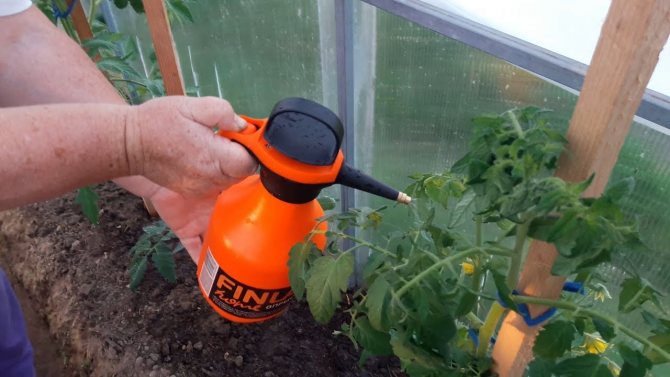

In order not to crumble flowers, ovaries, a cocktail is prepared and used for spraying:
- boric acid - 1-1.5 g;
- dark pink solution of potassium permanganate (protection against diseases) - 200 ml;
- milk (adhesive, a source of lactic acid bacteria) - 200 ml of homemade or 250 ml of store;
- iodine from fungal diseases - 60 drops (1.6 cubes in a syringe);
- urea for quick foliar feeding - 1 tbsp. l .;
- water - 10 liters.
The ovaries crumble not only due to a lack of boron, but also a lack of potassium.So foliar dressing should be combined with soil fertilization.
Signs of deficiency of macro- and micronutrients in tomatoes
The appearance of the bushes will make it clear whether you need to feed the tomatoes:
- The leaves become smaller and turn yellow, the veins on the underside turn blue-red - there is a lack of nitrogen.
- The stem is thin, the underside of the leaf is red-violet, the ovary is crumbling, the vegetables are small - there is a lack of phosphorus.
- New shoots are wrinkled, covered with bronze spots, the crop ripens unevenly - potassium deficiency.
- Leaves are brittle, curl upward, fall prematurely - little magnesium.
- The growth of the stem stops early, the flowers fall - lack of calcium.
- The lower old shoots turn yellow sharply, the stem thickens - lack of sulfur.
- The growth point of the stem turns black, the fruits acquire an ugly shape, tissues in vegetables die off - there is little boron.
- Pale yellow spots appear on the upper young leaves - a lack of manganese.
- Yellowing of leaves with iron deficiency is similar to nitrogen starvation.
Top dressing of tomatoes during fruiting in the greenhouse and open field
In July, and if the tomatoes were looked after correctly, and the bushes did not die from late blight or other diseases, then in August, the tomatoes continue to be given phosphorus-potassium fertilizers. Usually the dosage is 15 g per 10 liters, but you need to pay attention to the size of the bushes. Perhaps 10 g will be enough for standard low tomatoes, and 20 g for high indeterminate ones.
Overfeeding tomatoes with potassium monophosphate or Pekacid is difficult. Of course, when instead of 15-20 g, pour 25 g, and not half a kilogram.
If at the end of the growing season there are no obvious signs of phosphorus starvation, tomatoes can be fed with an ash extract. Just scattering it under the bushes is not enough - useful substances will begin to be released after a long time.
When caring for tomatoes, you need to regularly inspect the bushes for nutritional deficiencies, and feed them on time. During the harvesting period, it makes sense to do spraying - through the vegetative organs, the plants quickly receive top dressing, and all elements are removed in a short time.
It is impossible to get a decent harvest of tomatoes without the use of mineral dressings. Organics are not able to provide the culture with all the necessary elements. But if chemical fertilizers are applied correctly, in moderate doses, they will not lead to the accumulation of harmful substances, but will become a friend and reliable assistant to the gardener.
Folk remedies
Gardeners often combine natural substances to treat tomatoes during flowering, reaping the double benefits of nutrition and disease prevention.
Iodine and milk
For a friendly return of the harvest and protection of tomatoes from fungal diseases, iodine is mixed with milk - 15 drops per 1 liter. Add another 4 liters of water and spray the bushes with the solution in the evening. Milk creates a film on leaves and stems, through which pathogens cannot penetrate. Sometimes they use a processed product - milk whey in the same ratio. Iodine, as a microfertilizer, supports the generative processes of the plant.
Chaga
The birch tinder fungus is known for the presence of biogenic stimulants. 250 g of pharmacy powder is poured into 5 liters of water heated to 70-80 ° C and insisted for 48 hours, filtered. Add the same volume of water for spraying tomatoes in order to prevent late blight and feed them during the flowering period of the first brush. The bushes are treated the second time after 35-40 days. The rest of the solution is poured over the garden.
Boric acid
Boric acid remains the most popular foliar fertilizer to feed tomatoes during flowering. The trace element is important for the proper metabolism of the plant. The drug is dissolved only in hot water at the rate of 5 g per 10 liters. Spray 1-3 times during the growing season.In dry season and heat from 30 ° C, when the tomatoes are blooming, but do not form an ovary, 2 g of the product is used to refresh the bushes in the greenhouse.
Nettle
Vitamin greens of nettle and other weeds are excellent raw materials for herbal tea, which is fed with tomatoes. Organic dressing increases immunity and stress resistance, stimulates the development of the bush and fruiting. Load into a 200 liter container:
- 5 buckets of lightly chopped greens;
- a bucket of mullein or half a bucket of bird droppings;
- 100 g fresh yeast;
- add water and cover.
Instead of organic matter and yeast, they put pieces of dry bread, spoiled jam or sugar for fermentation, whey, add wood ash. The mixture is infused for 10-12 days. A liter of infusion is diluted with a bucket of water and poured over tomatoes during flowering and other crops.
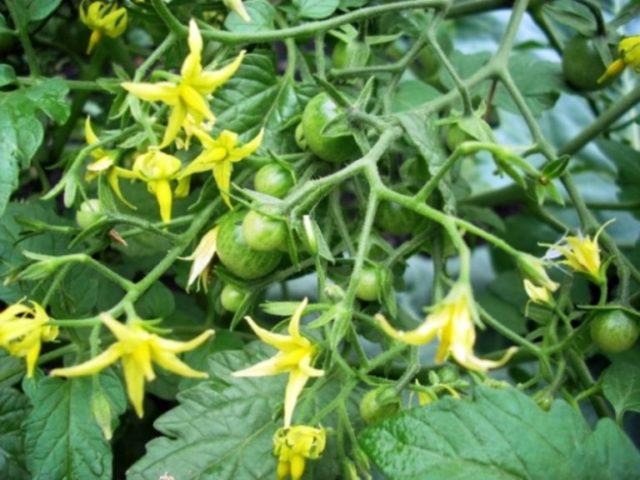

Why fertilize tomatoes
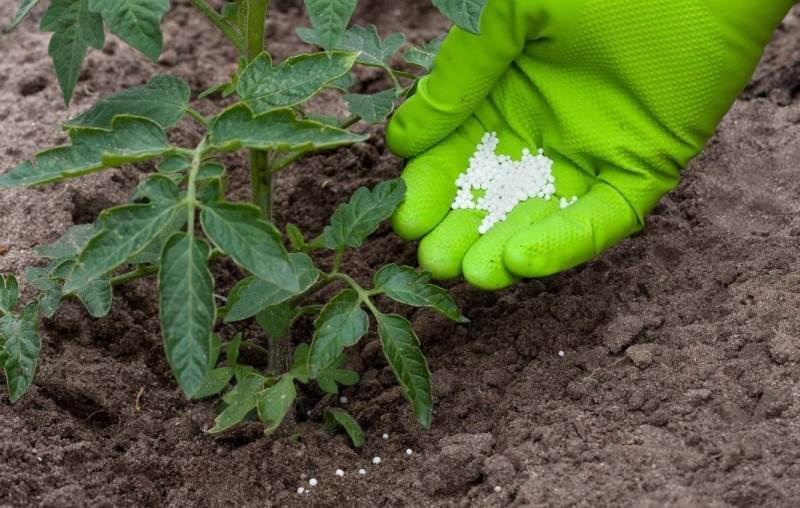

During flowering, tomatoes need to be fertilized 4 times. This will help provide the vegetable crop with the necessary trace elements and nutrients.
Attention! The main dressings are those that are introduced into the soil at the initial stage of the growing season and during the formation of ovaries.
If the plant at this time does not receive the necessary microelements, barren flowers are formed on it, which consume the strength of the culture. This also affects the fruits - they grow small.
Fertilizer should be applied quickly if:
- the lower leaves and the stem of the tops turned purple;
- the leaves begin to curl and spots of a yellow-brown hue form on them;
- few ovaries;
- tomatoes do not grow well.
These symptoms indicate a lack of certain elements, therefore, feeding is necessary. Otherwise, you can even lose your crop. Summer residents use folk and organic fertilizers to preserve culture. In addition, gardeners use folk remedies.
Root and foliar method
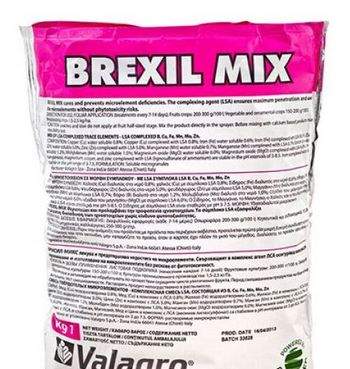

The difference between root feeding and spraying on the leaf is that in the second case, nutrients through the pores in the leaves penetrate into the plant intercellular fluid and together with it move directly into the fruit. Time is not wasted for the assimilation of minerals by the roots and for movement along the trunk, stems, leaves.
For foliar dressing use the drug "Brexil Mix". It contains in its composition all trace elements and chelating (promoting) agents necessary during the period of tomato filling. Therefore, it has a high degree of penetration into plant tissues during leaf treatments. The fertilizer molecules are soluble in water and fats.
Proven feeding methods
First of all, it should be noted that all top dressing should be liquid so that the plants better absorb nutrients.
The first plant feeding is needed to accelerate the growth of green tops and is carried out with nitrogen fertilizers. Top dressing of tomatoes during flowering should be carried out with substances containing potassium. It is he who is needed for the formation of fruits. In this case, one must also remember about phosphorus, which is needed at all stages of plant growth, and especially when the flowering of tomatoes begins. Phosphorus helps to strengthen the root system of plants.
When to feed?
It should be borne in mind that too frequent feeding can damage the tomatoes. Therefore, it is recommended to carry out this procedure during the following periods of the plant's life:
- After planting seedlings in the ground.
- Just before flowering.
- When the first ovaries appear.
- During fruiting.
For the full ripening of the fruits, when the tomatoes have not yet poured, the third and fourth feeding are most important. The third feeding contributes to the formation of full-fledged fruits. It is carried out during the period of active flowering and ovary formation. The next top dressing, carried out during the fruiting period, is aimed at increasing the yield of the bush. In poor soil conditions or with prolonged rains, tomatoes need more frequent feeding.For greenhouse plants, this procedure should be done less frequently to avoid excessive moisture. During the ripening of fruits, the amount of nitrogen fertilizers should be reduced - an excess of nitrogen will provoke the formation of green mass, which will take away all the nutrients.
Signs of the need for feeding
there is three main signs that you should hurry up with feeding:
- the lower leaves begin to turn yellow and this process spreads up the stem;
- the leaves have a purple tint;
- the leaves become brown and wither quickly;
- tomatoes do not grow well, in this case they need specialized feeding.
Useful tips for gardeners
- In order to fertilize tomatoes with house manure, it should be remembered that it already contains a certain amount of minerals (such as phosphorus and nitrogen). Therefore, it is necessary to strictly observe the dosage of mineral fertilizers in order to prevent their excess in the soil. Otherwise, it may affect the development of the fruit.
- Tomato belongs to the so-called chlorophobes - it reacts very sharply to the increased content of chlorine and its salts in the soil. Therefore, fertilizing tomatoes with potassium chloride is extremely undesirable, especially in greenhouse conditions.
- In addition to fertilizing, experienced gardeners recommend a root pulling method. To do this, each bush is slightly pulled at the bottom of the stem to cut off some of the small roots. Then the plant is watered and spud. As a result of stress, tomatoes channel all the nutrients from the soil to fruit development.
Tomato is a rather capricious plant that makes high demands on the quality of the soil and needs timely application of various fertilizers. At first glance, fertilizing a tomato, especially during the fruiting period, is a laborious and painstaking process. However, with proper care, the plant will give a bountiful and tasty harvest at the right time.
What tomatoes need during this period
By the time the first flower cluster is formed, tomatoes, as a rule, have already acquired 6-8 pairs of true leaves and nitrogen as a nutrient recedes into the background.
Advice! If suddenly your tomatoes look very frail, the leaves are thin and light, and they practically do not grow, then they may still need nitrogen.
This may be the case if the seedlings were bought on the market and were looked after in bad faith. But in a normal situation, at the flowering stage, tomatoes most of all need phosphorus and potassium, as well as numerous meso- and microelements, such as calcium, magnesium, iron, boron, sulfur and others.
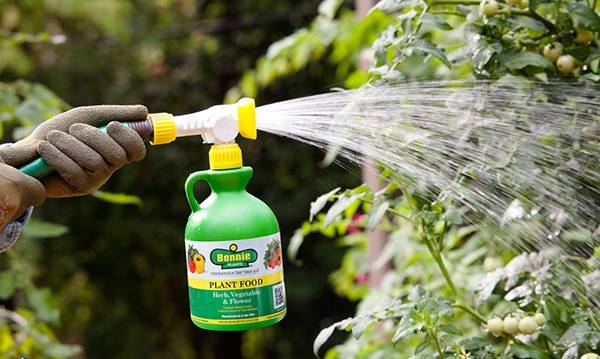

The best stimulants for the ripening of tomatoes
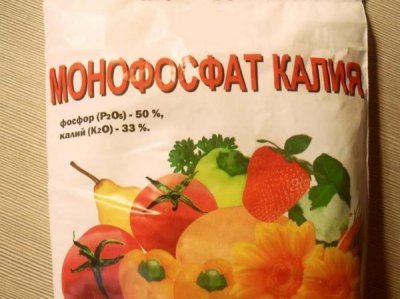

Potassium monophosphate... The main advantage of this fertilizer lies in its composition: the ratio of phosphorus to potassium is optimal for maximum productivity. The substance itself dissolves easily in water.
When feeding with potassium monophosphate, you need to take into account the fact that it is not compatible with magnesium and calcium fertilizers.
To prepare the solution, add 15 grams of the substance to a bucket of water. This amount of solution is enough to process 4 plants.
Potassium monophosphate is considered affordable and is a very popular fertilizer.
Top dressing for fast growth and ripening of fruits
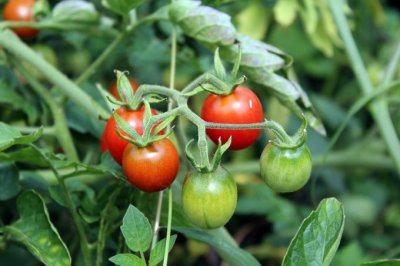

When fruits are tied on tomato bushes, the culture consumes a large amount of potassium, and also needs boron, manganese, iodine.
Phosphorus stimulates intensive work of the root system. And nitrogen-containing fertilizing at the time of fruiting should be used limitedly, avoiding an overabundance of this substance.
Better to apply them during the growth of tomatoes.
If you are unsure of the dosage of nitrogen in a particular drug or solution, it is best not to use it.

